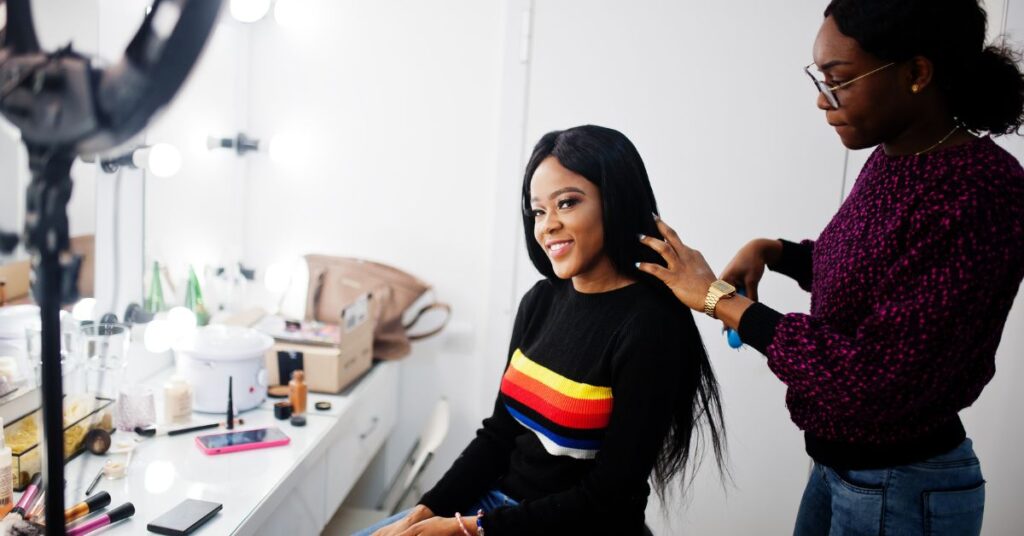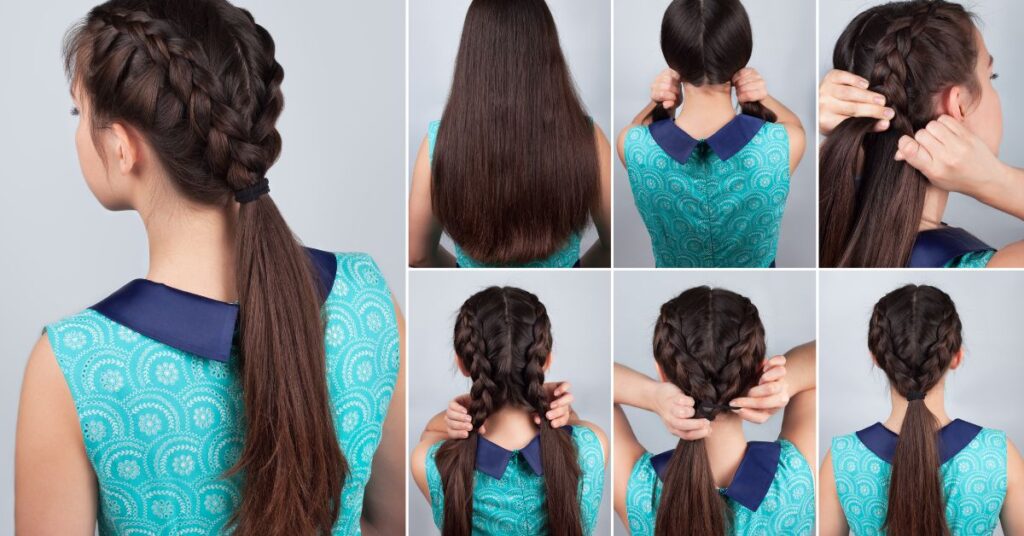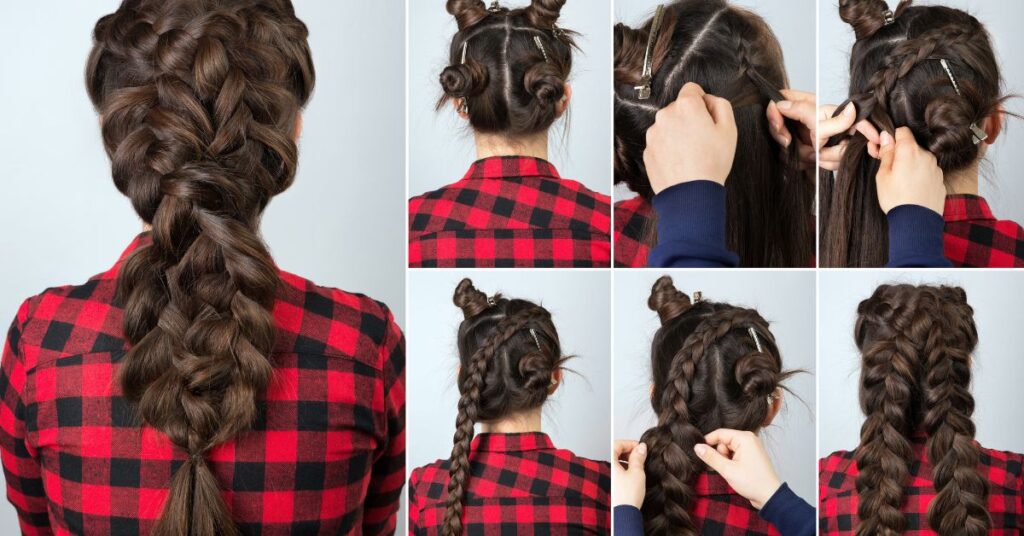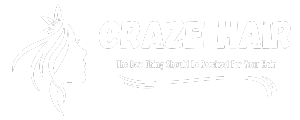
Introduce
Frizzy hair can be a challenge, but it doesn’t have to be a struggle. In fact, it’s an opportunity to embrace your unique hair texture and discover new styles that celebrate its natural beauty. In this article, we’ll explore five hairstyles specifically tailored for those “good frizzy hair days” when you want to rock your locks with confidence. From effortless waves to sleek ponytails, we’ve got you covered. So, say goodbye to frizz frustration and hello to fabulous hair days ahead.
Understanding Frizzy Hair: Causes and Types
Frizzy hair is often misunderstood, but once you grasp its causes and variations, managing it becomes much easier.
Causes of Frizzy Hair:
- Humidity: High humidity levels can cause the hair cuticle to swell, leading to frizz.
- Dryness: Lack of moisture in the hair strands can cause them to seek moisture from the air, resulting in frizz.
- Damage: Hair that is damaged or has split ends is more prone to frizz as the cuticle is compromised.
- Porosity: Hair porosity, or its ability to absorb and retain moisture, can influence frizz. High porosity hair tends to frizz more as it absorbs moisture quickly but struggles to retain it.
- Genetics: Some people are simply more predisposed to frizzy hair due to genetic factors.
Types of Frizzy Hair:
- Fine and Frizzy: Fine hair strands are more prone to frizz as they lack the weight to keep the cuticle flat.
- Coarse and Frizzy: Coarse hair tends to be drier and more prone to frizz due to its rough texture.
- Curly and Frizzy: Curly hair is inherently more prone to frizz due to its structure, which makes it harder for natural oils to travel down the hair shaft.
- Wavy and Frizzy: Wavy hair can experience frizz when the waves are not properly defined, leading to a disheveled appearance.
- Straight and Frizzy: Even straight hair can frizz, especially when it’s damaged or lacks moisture.
Embracing Frizz: Changing Perspectives
While frizzy hair is often seen as a nuisance, shifting our perspective can help us embrace its natural beauty and uniqueness.
Changing Perspectives:
- Reframe the Narrative: Instead of viewing frizz as a flaw, consider it as a sign of vitality and texture in your hair. Embracing frizz allows you to celebrate the diversity of your hair and break free from conventional beauty standards.
- Celebrate Individuality: Every person’s hair is unique, and embracing frizz means celebrating what makes your hair special. By accepting and loving your hair in its natural state, you empower yourself to feel confident and comfortable in your own skin.
- Experiment with Styles: Rather than trying to fight frizz, experiment with hairstyles that complement its texture. From tousled waves to voluminous curls, there are endless possibilities for styling frizzy hair that can showcase its beauty in different ways.
- Cultural Appreciation: Many cultures around the world embrace frizzy hair as a symbol of cultural identity and pride. By learning about and appreciating diverse beauty standards, we can broaden our perspective and cultivate a more inclusive definition of beauty.
- Self-Acceptance: Embracing frizz is not just about accepting your hair; it’s about accepting yourself. By embracing your natural hair texture, you embark on a journey of self-love and acceptance that transcends physical appearance.
Pre-Styling Tips: Preparing Your Frizzy Hair for Success
Before diving into styling, it’s essential to prepare your frizzy hair properly to ensure the best results and minimize frizz.
Preparation Techniques:
- Hydration is Key: Start by hydrating your hair with a moisturizing shampoo and conditioner. Look for products specifically formulated for frizzy hair, containing ingredients like coconut oil, shea butter, or argan oil, which help nourish and hydrate the hair shaft.
- Avoid Overwashing: Washing your hair too frequently can strip it of its natural oils, leading to dryness and increased frizz. Aim to wash your hair only when necessary, and consider using a sulfate-free shampoo to maintain moisture levels.
- Use a Leave-In Conditioner: Apply a leave-in conditioner or detangling spray to damp hair to provide an extra layer of moisture and protection. This helps smooth the hair cuticle and minimize frizz throughout the styling process.
- Apply a Heat Protectant: If you plan to use heat styling tools, such as a blow dryer or flat iron, always apply a heat protectant spray or serum beforehand. This helps shield the hair from damage caused by heat styling and reduces frizz.
- Detangle Gently: Use a wide-tooth comb or a detangling brush to gently remove knots and tangles from your hair. Start from the ends and work your way up to the roots to avoid causing breakage or damage.
- Pamper with a Hair Mask: Treat your frizzy hair to a weekly deep conditioning hair mask to replenish moisture and restore vitality. Look for masks containing hydrating ingredients like keratin, avocado oil, or silk proteins to nourish and strengthen the hair.
- Air Dry Whenever Possible: Whenever possible, allow your hair to air dry instead of using heat styling tools. Air drying helps maintain the hair’s natural texture and reduces the risk of heat damage and frizz.

Hairstyle 1: Effortless Waves for Frizzy Locks
Effortless waves are a versatile and stylish option for managing frizzy hair, providing a relaxed yet polished look. Here’s how to achieve this hairstyle:
Styling Steps:
- Prep with Products: Begin by applying a smoothing serum or cream to damp hair to tame frizz and add shine. Focus the product on the mid-lengths and ends, avoiding the roots to prevent weighing down the hair.
- Create Texture: Use a texturizing spray or sea salt spray to add texture and grip to your hair, making it easier to create waves. Spritz the product evenly throughout your hair, focusing on the lengths and ends.
- Divide and Conquer: Divide your hair into sections, starting from the bottom and working your way up. Clip away the top sections to keep them out of the way while you work on the lower sections.
- Wave Formation: Take a small section of hair and wrap it around a curling wand or curling iron, leaving the ends out for a more natural look. Hold the wand vertically for looser waves or horizontally for tighter waves, depending on your preference.
- Alternate Directions: Alternate the direction in which you wrap your hair around the wand to create more natural-looking waves. This helps prevent the waves from clumping together and adds dimension to your hairstyle.
- Set and Cool: Once you’ve curled all sections of your hair, allow the curls to cool completely before touching them. This helps set the waves and ensures they last longer throughout the day.
- Finger Comb: Once the curls have cooled, use your fingers to gently tousle and loosen them for a more relaxed look. Avoid using a brush or comb, as this can cause frizz and disrupt the wave pattern.
- Finish with Spray: To lock in the style and add hold, finish with a light-hold hairspray or texturizing spray. Mist the product evenly over your hair, focusing on the mid-lengths and ends, and scrunch lightly to enhance texture.

Conclusion
In conclusion, frizzy hair doesn’t have to be a source of frustration. By understanding its causes, embracing its natural beauty, and mastering the art of styling, you can transform your frizzy locks into a gorgeous mane that exudes confidence and style. Whether you opt for effortless waves, sleek ponytails, or voluminous buns, there are endless possibilities for showcasing the beauty of your frizzy hair. Remember to nourish and care for your hair with hydrating products and gentle styling techniques to keep it healthy and vibrant. With the right approach and mindset, every day can be a good frizzy hair day. So, embrace your unique hair texture, experiment with different styles, and let your frizz shine!.read more
FAQs: Frizzy Hair, Don’t Care! Here are 5 Hairstyles for a Good Frizzy Hair Day
1. How can I prevent frizz in my hair?
To prevent frizz, it’s essential to keep your hair hydrated and moisturized. Use a sulfate-free shampoo and conditioner specifically formulated for frizzy hair, and incorporate hydrating hair masks and leave-in conditioners into your routine. Additionally, avoid overwashing your hair, as this can strip it of its natural oils and contribute to frizz.
2. Can I still achieve stylish hairstyles with frizzy hair?
Absolutely! Frizzy hair can be styled in a variety of chic and trendy hairstyles, from effortless waves to sleek ponytails and voluminous buns. By understanding your hair’s texture and using the right products and techniques, you can create stunning hairstyles that showcase the beauty of your frizzy locks.
3. How can I maintain my hairstyle throughout the day without frizz?
To maintain your hairstyle and minimize frizz throughout the day, it’s important to use the right products and styling techniques. Finish your hairstyle with a light-hold hairspray or texturizing spray to lock in the style and add hold. Additionally, avoid touching your hair excessively, as this can disrupt the style and contribute to frizz.
4. Are heat styling tools safe to use on frizzy hair?
Heat styling tools can be used on frizzy hair, but it’s essential to use them responsibly to prevent damage. Always apply a heat protectant spray or serum before using heat styling tools, and avoid using high heat settings. Additionally, limit the frequency of heat styling and give your hair regular breaks to recover and maintain its health.
5. How often should I wash my frizzy hair?
The frequency of washing your frizzy hair depends on your hair type and personal preferences. Generally, it’s recommended to wash your hair every 2-3 days to maintain its natural oils and prevent dryness and frizz. However, you may need to adjust your washing frequency based on factors such as your hair’s texture, scalp condition, and styling routine.

